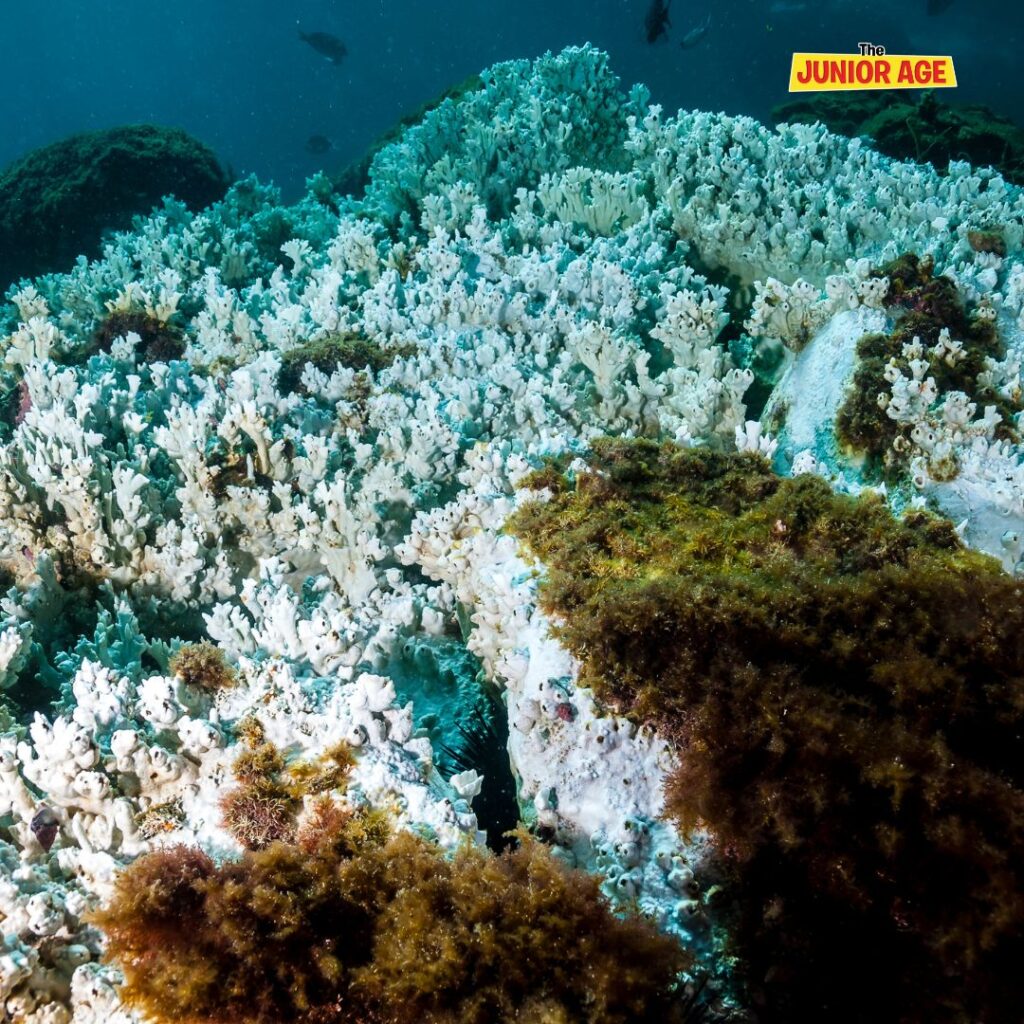What is coral bleaching?
Excessively warm ocean or sea water leads to coral bleaching. Coral bleaching happens when corals lose their vibrant colours and turn white. Due to high temperatures, algae leaves the coral, causing it to fade and look bleached. If the temperature stays high, the coral won’t let the algae back, and the coral will die. One of the main causes of coral bleaching is climate change.

Get Know more about Mammal, Buy This Mammals Flashcards.
The Great Barrier Reef Turns Grey
In March 2024, the Australian Government said that Australia’s Great Barrier Reef is experiencing yet another mass coral bleaching event due to heat. This is the fifth time in eight years that the Great Barrier Reef has experienced a mass bleaching event. This means that sections of colourful corals turn pale and grey.

Climate change causes the temperature of the world’s oceans to rise which leads to bleaching. Bleaching does not kill coral but makes them vulnerable to disease and starvation. Even though it is possible for corals to recover from mass bleaching events, frequent bleaching makes it harder for coral reefs. to bounce back. According to scientific studies, climate change is increasing ocean temperatures, making coral bleaching events more frequent.
Did You Know?
The Great Barrier Reef is an important ecosystem for marine life and it stretches for 2,300 km off the coast of Queensland. It is also a UNESCO World Heritage site
Can Underwater Music Save Coral Reefs?
Almost a quarter of all marine species live in coral reefs. However, since the 1950s more than half of the world’s coral reefs have died mainly because of pollution and climate change. Recently, a team of scientists working off the coast of the US Virgin Islands in the Caribbean have hopefully found a solution to revive coral reefs.

A healthy coral reef makes a lot of noise like clicking, grunting, and scratching under the water, because of all the wildlife that live there. They’ve been testing whether playing sounds of a healthy coral under the water could help bring damaged coral reefs back to life. They found that baby corals (known as coral larvae) were seven times more likely to settle on damaged reefs when they heard recorded sounds of a healthy reef. And this could help damaged reefs. recover! This method was successfully tested by the researchers in the Caribbean. So this could be a new way to protect the coral reefs.
Watch Full Video On, Bee-lieve it or not! Interesting facts about Honey Bees

